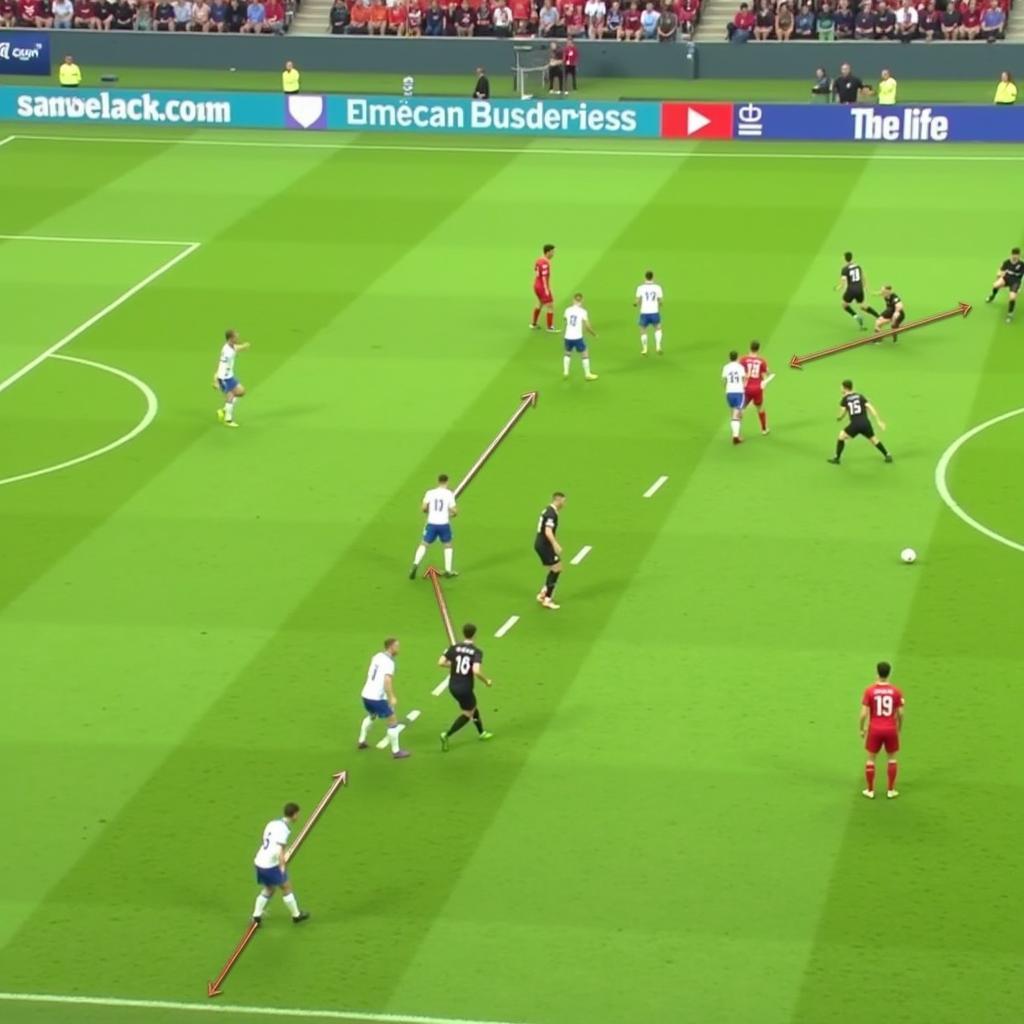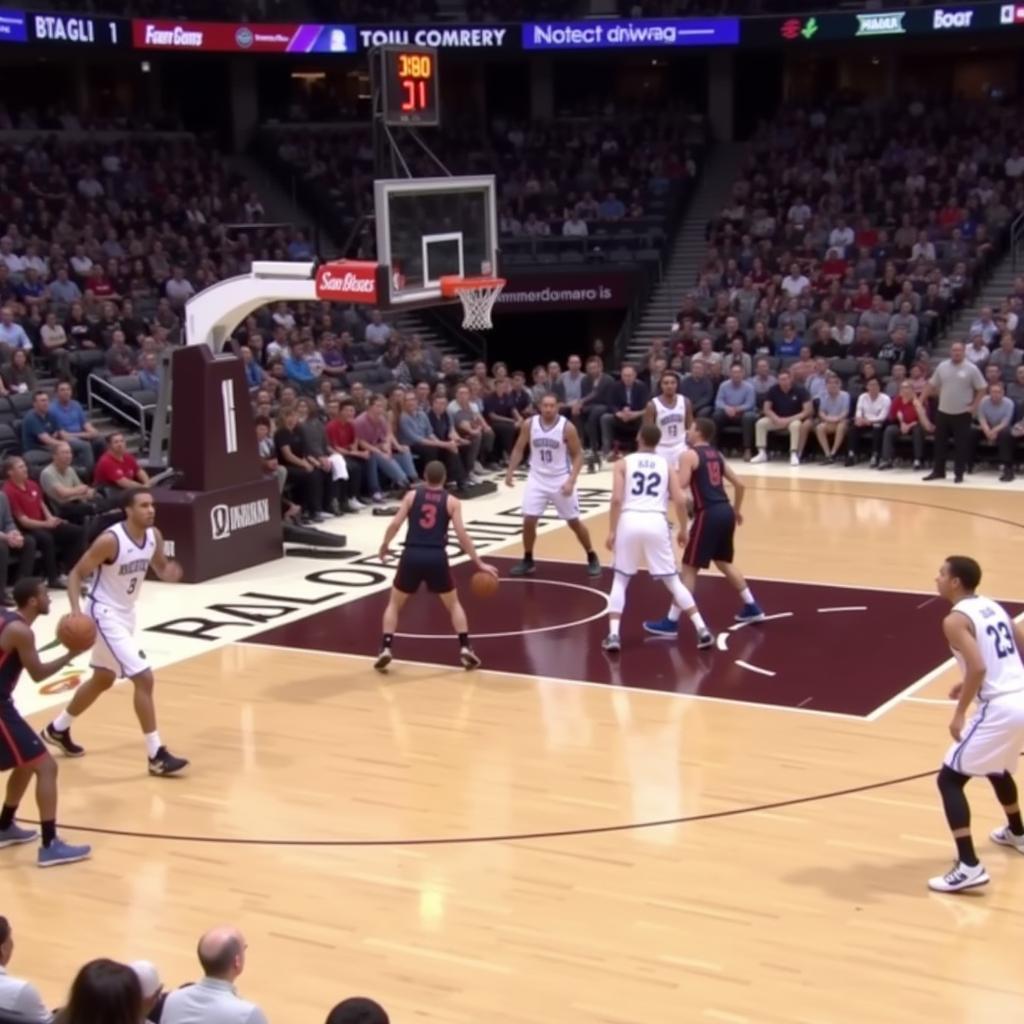Switching Play is a crucial tactic in various competitive scenarios, from sports like soccer and basketball to video games and even business strategies. It involves a swift and decisive shift in focus or action, often to exploit an opponent’s weakness or create a new opportunity. Understanding when and how to effectively switch play can significantly enhance your performance and lead to greater success. to switch between two positions.
The Art of the Switch: Timing and Execution
Switching play isn’t simply about making a change; it’s about making the right change at the right time. A poorly executed switch can be easily predictable and even detrimental. The key lies in recognizing opportune moments, such as when the opponent is overcommitted to one side of the field, or when a gap in their defense opens up. Precise execution is paramount, requiring quick thinking, accurate passing, and coordinated movement.
Why Switching Play is Essential
The benefits of mastering the switching play are numerous. In soccer, a well-timed switch can stretch the opposing team’s defense, creating space for attackers to exploit. In basketball, it can lead to open shots or drive opportunities. Even in business, switching play might involve shifting resources to a new market or adopting a different marketing strategy to capitalize on emerging trends. This ability to adapt and re-focus is what separates good players from great ones.
A crucial element of switching play is anticipating your opponent’s reactions. By understanding their tendencies and predicting their movements, you can preemptively switch play and gain a significant advantage. This requires careful observation and analysis of their playing style. Are they prone to aggressive pressing? Do they tend to favor one side of the field? By identifying these patterns, you can anticipate their responses and execute your switch accordingly.
 Soccer Players Executing a Switching Play on the Field
Soccer Players Executing a Switching Play on the Field
Switching Play in Different Contexts
Switching play is a versatile tactic that can be applied across various domains. Let’s delve into some specific examples:
-
Sports: In sports like soccer and basketball, switching play is a fundamental aspect of both offense and defense. It disrupts the opponent’s rhythm, forces them to readjust, and creates opportunities for scoring or regaining possession.
-
Video Games: Many strategy games, such as real-time strategy (RTS) and multiplayer online battle arena (MOBA) games, rely heavily on switching play. This might involve shifting focus between different units or objectives, adapting to changing circumstances, or exploiting weaknesses in the opponent’s strategy.
-
Business: In the business world, switching play can involve pivoting to a new product or service, entering a new market, or changing marketing strategies in response to market shifts.
Mastering the Switch: Tips and Tricks
Here are some practical tips to improve your switching play:
- Practice your passing: Accurate and timely passing is essential for executing effective switches.
- Improve your vision: Develop your ability to scan the field and identify potential openings.
- Communicate with your teammates: Clear communication is crucial for coordinating movements and ensuring everyone is on the same page.
- Study your opponents: Analyze their tendencies and predict their reactions to anticipate their movements.
- Be decisive: Hesitation can be costly. When you see an opportunity to switch play, commit to it fully.
 Basketball Players Executing a Fast Break with a Switch Play
Basketball Players Executing a Fast Break with a Switch Play
“A well-executed switch is like a chess move – it forces your opponent to react and think two steps ahead,” says renowned esports coach, Alex “Strategist” Thompson. “It’s not just about changing direction; it’s about changing the entire dynamic of the game.”
Conclusion
Mastering the switching play is a crucial element of success in any competitive environment. By understanding its principles and practicing its execution, you can significantly improve your performance and gain a decisive edge over your opponents. So, whether you’re on the soccer field, the basketball court, or navigating the complex world of business, remember the power of the switch and use it to your advantage. Switching play can be your key to victory.
FAQ
- What is switching play?
- Why is switching play important?
- How can I improve my switching play?
- What are some common mistakes to avoid when switching play?
- How can I anticipate my opponent’s reaction to my switch?
- Are there any drills to practice switching play?
- How does switching play differ across different sports or games?
 Business Team Adapting their Strategy in a Meeting
Business Team Adapting their Strategy in a Meeting
“In today’s rapidly evolving market, the ability to switch play is no longer a luxury, it’s a necessity,” adds business strategist, Dr. Emily Carter. “Companies that can adapt quickly and effectively are the ones that thrive.”
Common Scenarios Requiring a Switching Play
- Opponent Overload: When the opponent has stacked their defense on one side.
- Creating Space: To open up passing lanes or create opportunities for teammates.
- Exploiting Weakness: Taking advantage of a gap or vulnerability in the opponent’s defense.
- Changing the Tempo: To disrupt the opponent’s rhythm and force them to readjust.
Suggested Further Reading:
- Understanding Defensive Formations
- Advanced Offensive Strategies
- The Psychology of Competition
For support, please contact Phone Number: 0902476650, Email: [email protected] or visit us at 139 Đ. Võ Văn Kiệt, Hoà Long, Bà Rịa, Bà Rịa – Vũng Tàu, Việt Nam. We have a 24/7 customer support team.





